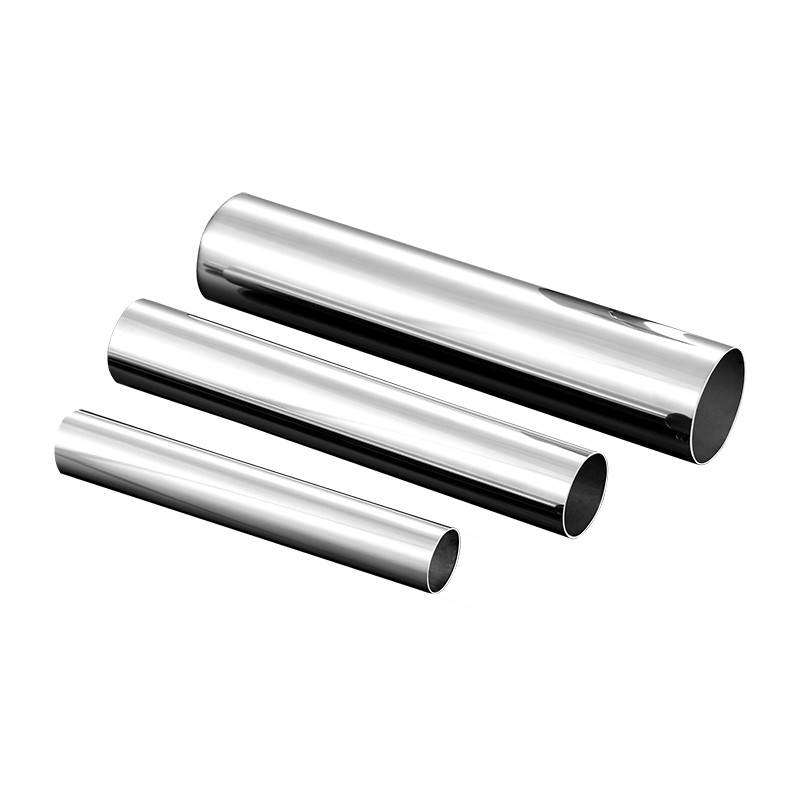Precautions for Use of Stainless Steel Welded Pipes
2025-07-02
Abstract:
Stainless steel welded pipes are a popular choice in various industries due to their excellent corrosion resistance, strength, and durability. However, to ensure optimal performance and longevity, it is essential to follow specific precautions when using these pipes. This essay outlines the critical precautions to be taken during the use, maintenance, and installation of stainless steel welded pipes to avoid potential issues such as corrosion, leakage, and damage.
1. Proper Selection of Material:
Before installation, ensure that the correct grade of stainless steel welded pipe is selected for the application. The most commonly used materials are Austenitic, Ferritic, Martensitic, and Duplex stainless steels, each offering different mechanical and corrosion resistance properties. For example, Austenitic stainless steels (e.g., 304, 316) are ideal for environments with high corrosion risks, while Ferritic stainless steels (e.g., 430) are suitable for low-stress applications. Understanding the specific needs of the application, such as exposure to chemicals, temperature, and mechanical stress, is vital to ensure long-lasting performance.
2. Handling and Storage:
Stainless steel welded pipes should be handled with care to avoid physical damage. Impact or rough handling can cause denting or scratching, which may affect the integrity of the pipe and contribute to localized corrosion. Pipes should be stored in a dry environment, free from contaminants that could lead to rust or corrosion. If the pipes are exposed to moisture or harsh chemicals during storage, protective coatings or covers should be used to safeguard the material.
3. Installation Considerations:
During the installation of stainless steel welded pipes, it is crucial to ensure proper alignment and fitting of the pipes. Any misalignment or improper welding can lead to stress concentration, which increases the risk of leaks or failure. Pipe supports and hangers should be designed to minimize stress on the pipes and ensure that they are evenly distributed along their length. Furthermore, when welding the pipes, use compatible welding materials and techniques to prevent the formation of brittle or weak joints that may cause leakage or failure over time.
4. Corrosion Prevention:
Although stainless steel is highly resistant to corrosion, improper handling or exposure to certain conditions can lead to corrosion over time. Stainless steel welded pipes are susceptible to pitting and crevice corrosion in chloride-rich environments, particularly at elevated temperatures. To prevent such issues, ensure that the pipes are cleaned regularly to remove any buildup of dirt, debris, or salt. For applications involving exposure to harsh chemicals, a proper passivation process should be employed to enhance the corrosion resistance of the pipes.
5. Temperature and Pressure Considerations:
Stainless steel welded pipes are designed to withstand a specific range of temperatures and pressures. Exceeding these limits can compromise the strength and integrity of the material. For high-temperature applications, ensure that the selected stainless steel grade is capable of withstanding thermal expansion and contraction. Likewise, pressure ratings should be carefully checked to prevent failure under extreme pressure conditions. If the piping system is subject to fluctuating pressure, expansion joints or compensators may be required to reduce stress on the pipes.
6. Regular Inspection and Maintenance:
To maintain the reliability and performance of stainless steel welded pipes, regular inspections are essential. Check for signs of corrosion, wear, or damage at frequent intervals, particularly in high-risk areas such as joints, bends, and connections. Visual inspections, ultrasonic testing, or other non-destructive testing (NDT) methods can help identify potential issues before they lead to system failure. In case of corrosion or other damage, it is vital to repair or replace the affected sections of pipe to prevent leaks or further degradation of the system.

7. Cleaning and Sanitizing:
Stainless steel welded pipes used in industries like food processing, pharmaceuticals, or water treatment must be regularly cleaned and sanitized to prevent contamination. The pipes should be cleaned using appropriate methods that do not compromise the surface integrity. Harsh abrasives or aggressive chemicals should be avoided, as they may lead to surface damage, which can encourage the onset of corrosion. For cleaning, methods such as steam cleaning, chemical cleaning, or water flushing may be used, depending on the application.
8. Compatibility with Other Materials:
In multi-material piping systems, it is important to ensure compatibility between stainless steel welded pipes and other materials used in the system, such as valves, flanges, or gaskets. The use of dissimilar metals can lead to galvanic corrosion, particularly when exposed to an electrolyte. In such cases, insulating materials or non-metallic gaskets may be used to avoid direct contact between the metals and prevent corrosion.
9. Avoiding Over-tightening:
When installing stainless steel welded pipes, avoid over-tightening the bolts and nuts. Excessive tightening can distort the pipe or damage the threads, compromising the seal and potentially causing leakage. Use proper torque settings as specified by the manufacturer to ensure a secure and leak-free connection.
Conclusion:
Stainless steel welded pipes offer excellent performance and longevity when used correctly. By following proper material selection, handling, installation, maintenance, and cleaning protocols, users can maximize the service life and efficiency of these pipes. Regular inspections and adherence to manufacturer guidelines will help identify potential issues early, allowing for timely repairs and avoiding costly system failures. By taking these precautions, the integrity of stainless steel welded pipes can be maintained, ensuring safe and efficient operation in various industrial applications.


